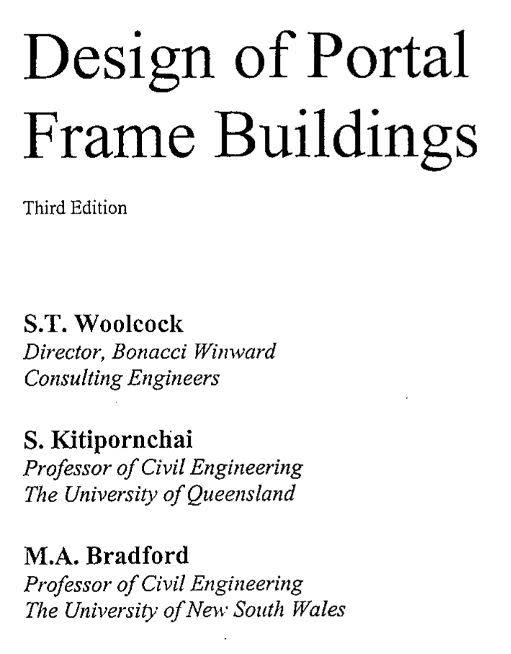Well, here it is, yet another thread on buckling lengths. Although I would say this is a very common issue, I have not been able to find clear information until now and I am interested what you guys think of the following situation. I have a simple portal frame in which the rafters have the top flange braced by transverse members at several locations. The bottom flange is unbraced. I am interested in the approach to design for gravity loads (ignore uplift), more specifically on how the critical length of the bottom flange is to be considered. The rafters being fixed to the columns have rather high negative moments at the ends (ignore haunches) so I am uncertain as to how the critical length should be taken. Of course, the conservative approach would be to take it as the full length of the beam, but after the inflexion points in the moment diagram, the bottom flange is in tension, so it would seem like overkill (I am aware that 0 moment points are not to be considered as braced points). Do you do buckling analyses in this type of situation and just extract the elastic critical moment that way?
An additional point for which I have found conflicting information is the in-plane (column) buckling length of the rafters. Ive seen it taken both with 1 x L and 0.5 x L, L being the total span between columns. Also, if the frame is a sway frame, is it also sometimes the case that this buckling length would be larger than the beam length?
Any opinions are much appreciated.
An additional point for which I have found conflicting information is the in-plane (column) buckling length of the rafters. Ive seen it taken both with 1 x L and 0.5 x L, L being the total span between columns. Also, if the frame is a sway frame, is it also sometimes the case that this buckling length would be larger than the beam length?
Any opinions are much appreciated.

![[pipe] [pipe] [pipe]](/data/assets/smilies/pipe.gif)

